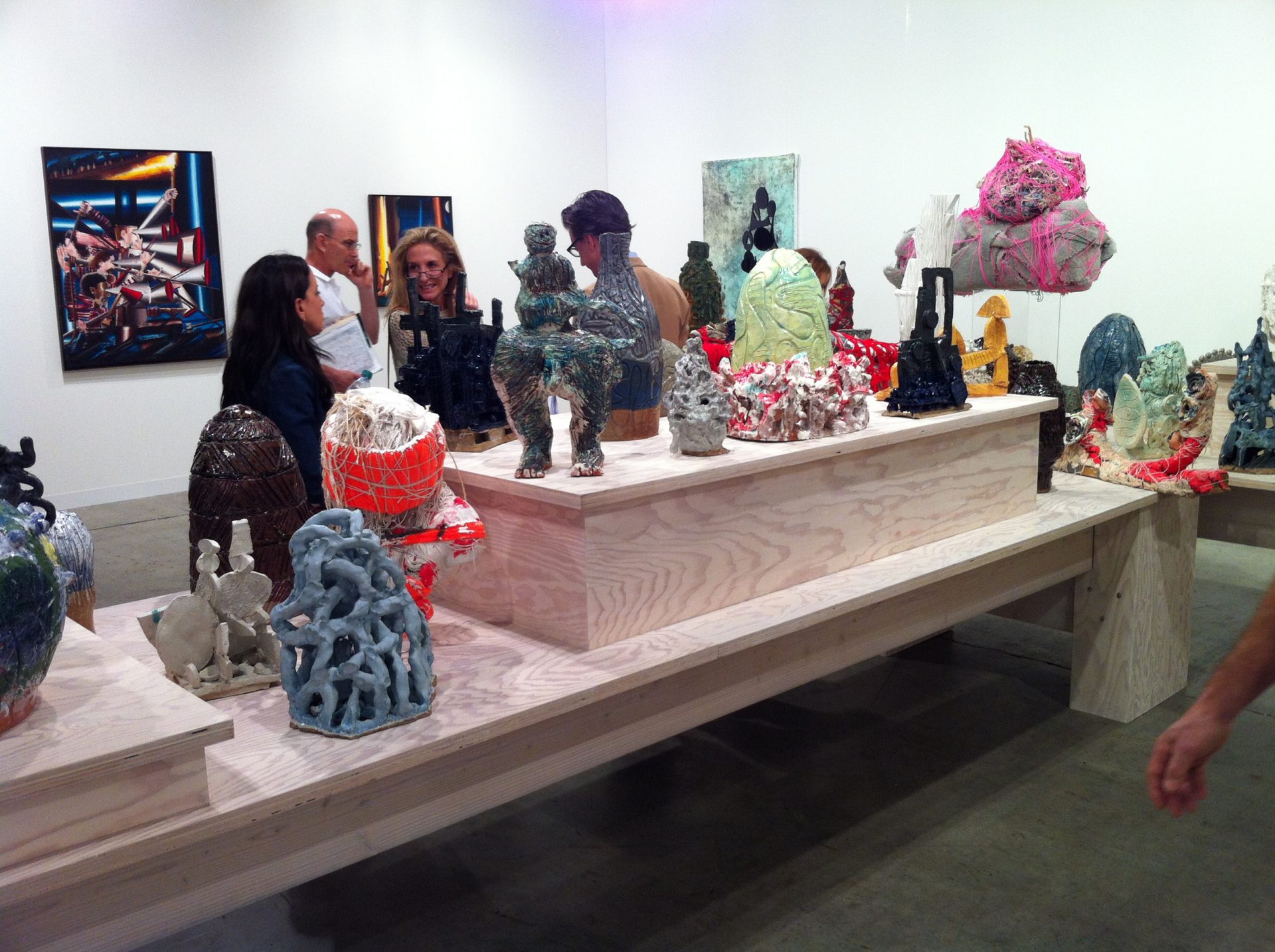“With all the controversy surrounding last months Blu-Jeffrey Deitch mural imbroglio at the Museum of Contemporary Arts Geffen Contemporary and serious talk of British streets artist Banksys chances of an Oscar nomination for his documentary ‘Exit Through the Gift Shop,’ some may be wondering just what all the fuss is about.
Taschen offers a crash course in the origins and players in the street art movement over the last four decades with ‘Trespass: A History of Uncommissioned Urban Art,’ ($39.99).
‘Every picture included in the book is an unauthorized and uncommissioned work of art, ‘ said Marc Schiller, co-curator and co-founder of the Wooster Collective (along with his wife Sara Schiller) in New York City. ‘Its an ephemeral art that sometimes lasts only 30 minutes with the artists on the run. The last thing they are thinking about is the documentation.’
The works of 150 artists are featured including Keith Haring, Spencer Tunick, Shepard Fairey, Barry McGee and Banksy, who also wrote the introduction.
Schiller and his wife, Sara, focused on the last 15 years, when street art took off, while editor Ethel Seno tracked down archival drawings and photographs, including one from 1517 of Martin Luther, posting the 95 Theses in Wittenberg, Germany – an early example of individual ideologues trespassing on public space.
‘Trespass’ goes beyond street art and graffiti focusing also on protest, and performance art and sculpture. ‘These artists ‘want to humanize the city with their diversity and creativity, bring it to life by injecting authenticity,’ said Sara Schiller. ‘The cities are losing that element because of the proliferation of advertising and gentrification of neighborhoods.’
Some critics regard this type of art as purely criminal vandalism. Artist do run the risk of being arrested, but its the adrenaline rush of getting away with it, having their name and art in public view, and the act of free speech that fuels their drive.
With location of utmost importance, many risk their lives to get their message out, such as Sane, Smith, who painted their names on the Brooklyn Bridge in 1988. One of the most daring outlaws was French aerialist, Philippe Petit, whom many consider the granddaddy of death-defying performance art. In the summer of 1974, without permission, Petit walked a tightrope between the under-construction World Trade Center towers, creating a worldwide sensation.
‘Trespass’ also reveals how street art has moved out of the city limits and gone domestic. Guerrilla gardening and guerrilla knitting are some of the least offensive graffiti art genres to appear on the scene in recent years. ‘Yarnbombing,’ or ‘graffiti knitting,’ aims to make street art warm and fuzzy. The one member, KnittaPlease, wrapped a colorful, knit cozy ‘tag’ around the ‘Welcome to Manhattan’ sign pole in 2006.
Guerrilla Gardening projects range from the more extensive beautifying of overgrown sidewalks to the simplistic such as the Pansy Project in London. Tired of the anti-gay slurs being hurled his way in public, artist Paul Harfleet would return to the location of the incident and plant pansies. He would photograph the flower and post it on his website with the title of the offensive insult.
‘Trespass: A History of Uncommissioned Urban Art,’ published in October, will also be available at MOCAs ‘Art in the Streets’ exhibition in April.”
– Liesl Bradner
Images: Top-Paolo Buggiani, Minotaur, Brooklyn Bridge, NYC, 1980. Courtesy Paolo Buggiani. Right-Joey Krebs the Phantom Street Artist, Los Angeles, California, 1993. Courtesy Anthony Friedkin.Bottom left-‘Trespass’ cover english edition. Gordon Matta-Clark, ‘Window Blow-out,’ New York City, 1976 courtesy the estate of Gordon Matta-Clark and David Zwirner Gallery, New York, Generali Foundation Collection, Wien ©2010 VG Bild-Kunst, Bonn
(Via Culture Monster.)
